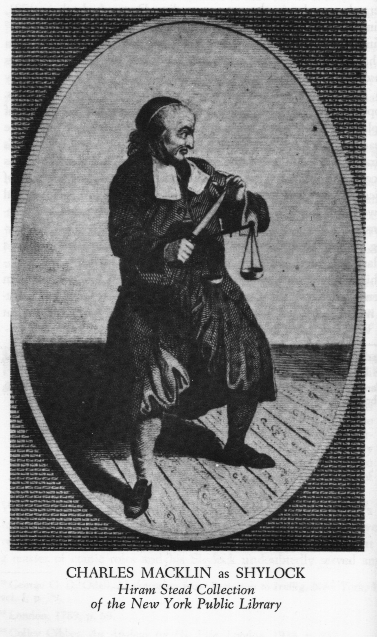
In 1741, Macklin presented a Shylock that stressed his villainy and avarice. Macklin invested his
Shylock with a malicious vitality that shocked audiences into seeing Shylock as a significant dramatic
character. A kind of passionate realism that Macklin injected into the character worked against the
grandiose folk caricature of the Jew. In short, Macklin's Shylock was a Jew who was still evil, but
not an evil fantastical monster. The evil Jew could be the man next door.
Audiences often had tremendous difficulty separating Macklin the man from his character of Shylock,
because many thought that Macklin himself was something of a devil. The fact that Macklin had
killed a fellow actor in a dispute over a beard probably did not help his public image.
Stage History / Index Page / Geocities

